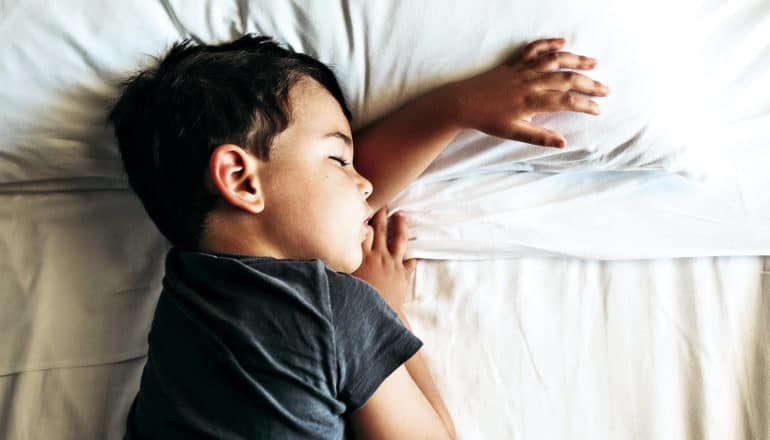
Using a bedroom air filter that traps fine particles of pollution can significantly improve breathing in asthmatic children, a new study shows.
The study suggests that with consistent use, the filters may help prevent, not just alleviate, asthmatic flare-ups.
Researchers say this is the first study to document that physiological improvements occur in the airways of children when homes have air filters.
While using the filters daily for two weeks, children in the study experienced decreased airway resistance and lung inflammation and increased airway elasticity, among other benefits.
“Pharmaceutical companies have spent large amounts to develop drugs that can work on lower airways, but they are very expensive,” says Junfeng Zhang, professor of global and environmental health at Duke University’s Nicholas School of the Environment.
“Our results show that using an air purifier to reduce the exposure of lower airways to pollutants could help asthmatic children breathe easier without those costly drugs. This warrants a clinical trial to confirm findings.
Air filters vs. bedroom pollution
Fine particulate matter (PM2.5) is a ubiquitous air pollutant originating from fossil fuel emissions, wildfires, and other biomass burning, industrial sources, and gasoline- and diesel-powered vehicles.
Thirty times smaller in diameter than a human hair, the particles are easily inhaled and can penetrate deep into the small, or lower, airways where they can trigger or exacerbate asthma symptoms. Inhalers don’t help, since they are only designed to open upper airways.
Researchers conducted the double-blind crossover study in a Shanghai suburb during a period of moderately high PM2.5 pollution in 2017. They gave 43 children with mild to moderate asthma two air filters to use in their bedrooms. One was a high-efficiency particulate air (HEPA) filter capable of removing PM2.5; the other was a sham filter.
Families used each filter for two weeks in random order with a two-week interval in between. Neither the children nor their families knew which filter was which.
Results showed that PM2.5 concentrations inside the children’s bedrooms were a third to two-thirds lower when the real air filters were in use than when the sham ones were being used, says Michael H. Bergin, professor of civil and environmental engineering at Duke’s University’s Pratt School of Engineering.
This drop coincided with significant improvements in how easily air flowed in and out of the children’s small airways and lungs, Bergin says. These improvements included a 24% average reduction in total airway resistance, a 43.5% average reduction in small airway resistance, a 73.1% average increase in airway elasticity, and a 27.6% average reduction in exhaled nitric oxide, a biomarker of lung inflammation.
Looking ahead
Although the benefits lasted only as long as children’s bedrooms had them, “it’s probable that if children use the filters on an ongoing daily basis, they will see continued benefits,” Zhang says.
If clinical trials confirm the new study’s findings, the filters could serve as a practical preventive measure for asthma management in polluted outdoor or indoor environments worldwide, he says.
They could also be lifesavers in areas near wildfires.
“Look at the high PM2.5 pollution levels that occurred in San Francisco last year as a result of smoke from the California wildfires, and at the air-quality problems happening this year from the bushfires in Australia,” Zhang says. “People should really consider using one of these devices during wildfires.”
The findings appear in JAMA Pediatrics.
Xiaoxing Cui, a 2018 doctoral graduate of Duke, is the paper’s lead author. Additional coauthors are from Shanghai Jiao Tong University, Duke Kunshan University, Tsinghua University, the Beijing Key Laboratory of Indoor Air Quality Evaluation and Control, Peking University, the University of Wisconsin-Madison, and Duke. Underwriters Laboratories and the National Natural Science Foundation of China.
Source: Duke University
The post Bedroom air filters ease breathing for kids with asthma appeared first on Futurity.
from Futurity https://ift.tt/34d3Tsc
No comments:
Post a Comment